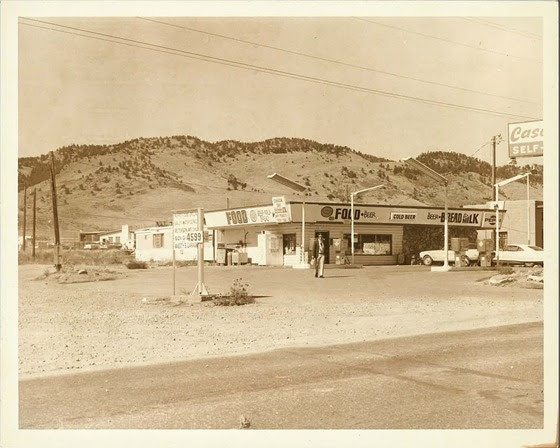When Boulder County Sheriff’s Office Detective Don Dillard took on the role of investigating cold cases three years ago, he was handed 16 unsolved cases, including the now nearly 50-year-old homicide of John Patterson.
Decades later and despite a lack of DNA evidence in the case, Dillard provided a look into how he used ballistic technology to link bullets from the scene to the rifle in a suspect’s room.
In addition to examining the hard evidence, Dillard also did interviews with detectives on the case in the 1970s and with family members. He said he reached out to interview Mr. Locicero in June but was notified that he died in March 2024. Dillard said when he reached out to Patterson’s family, they were surprised and thought the case had been forgotten.
In response to the closure of the case, Patterson’s siblings released a statement, which was read by Sheriff’s Office spokeswoman Carrie Haverfield on Thursday.
“We would like to extend our sincere gratitude to the Boulder County Sheriff’s Office and especially Detective Dillard for solving our brother John’s homicide case. After so many years we have the long-awaited answers and a sense of justice our family has hoped for,” Haverfield read. “While nothing can erase the pain of our loss, knowing the truth brings us a measure of peace.”
Clues decades ago
In 1975, Patterson, 20, had just moved from Idaho to the Boulder area and was working at the Cascade Service gas station on Broadway. On Sept. 29, 1975, during what detectives believe was an armed robbery, Patterson was fatally stabbed in the chest. Beside him were two unfired bullets and a container of hard-boiled eggs, with some missing.
 John Patterson (courtesy photo / Boulder County Sheriff’s Office)
John Patterson (courtesy photo / Boulder County Sheriff’s Office)
Law enforcement canvassed the area and spoke with some managers of a local motel who said a man had just arrived in a car and a rifle was noticed under one of the seats.
This led authorities to the front door of then-32-year-old Louis Jess Locicero, who was staying in the motel in the 4500 block of Broadway in the Boulder area. While talking to him, law enforcement saw a pair of pants on his floor, with a knife sheath attached. Later, the hard-boiled eggs were found on Locicero’s car dashboard.
Locicero was taken into custody and held for three days while a deputy flew to Washington, D.C., to turn the evidence over to the Federal Bureau of Investigations, according to Dillard. The FBI conducted testing that would later conclude cloth fibers on the knife matched Patterson’s shirt, a gun with the same caliber bullets to those found on scene were found in Locicero’s car, and hair the same color and length of Patterson’s was found on the sole of one of Locicero’s boots, according to Dillard.
However, Dillard said, when the FBI initially received the evidence on the third day of Locicero’s detainment, deputies were informed that it could take months to be processed. Dillard said this may be why Locicero was released after a three-day hold.
“What I believe happened, again knowing that (at the time things went) to Washington, D.C., to the FBI, I feel that by the time we got the physical evidence there, it wasn’t going to be quick enough and so at the third day we let him go,” Dillard said.
After being released, Locicero reportedly left town and eventually ended up in Idaho.
‘Within an hour’
DNA testing in criminal cases didn’t exist then, Dillard said in a press conference Thursday, and neither did cellphones or modern-day surveillance that detectives now often turn to during investigations. Dillard said despite DNA technology existing today, the FBI told him that because the knife had already been tested, they wouldn’t test it again.
“In the cold cases, what I have learned is that once a scientist touches something and signs their name to that report, other scientists will not touch that item … I was told they wouldn’t look at the knife and that was simply because it had already been tested by someone. That tissue like material that came off later that night, I asked the FBI if that is material they would typically keep back then, they believe it would’ve been, but we don’t have it here,” Dillard said.
In 2025, the Boulder County Sheriff’s Office was approached by Evidence IQ, a company known for its technology, “Ballistics IQ,” which is an automated ballistic imagine triage that captures images of bullets and, based on the specific markings, is able to indicate if they’re from the same gun as other bullets, Dillard said. With the lack of DNA evidence in the case, Dillard said he knew connecting the bullets was the best way to close the case.
“Going through this case, trying to identify things that had been done and things that hadn’t been done, what I was trying to do is see if there is a way to put the bullets from the scene to the bullet or the rifle in his room,” Dillard said.
Dillard said that .30 caliber carbine, which was what the bullets on scene and bullets in the gun were, wasn’t very common in the `70s. The cartridges found on the scene also bore extractor marks and indications of “light hits” on the primers, according to a Sheriff’s Office press release. Dillard said this indicated that the bullets were misfired.
Within an hour of entering the evidence into Ballistics IQ, Dillard was able to confirm that the bullets matched.
“We scanned the two bullets from the scene, the bullet that was in the rifle and the software, within an hour, was able to tell us that they were all three from one gun. With that information, I sent the three bullets in, and we had the ballistics expert validate, or confirm, what the computer software said.”
He continued: “We were able to add (the ballistics evidence) with the hair, with the knife and the fibers, and ultimately, I was able to do an overview for the DA’s Office for them to go through the investigation and, ultimately, agree with the finding that if Mr. Locicero was alive today, I would’ve been able to complete a warrant for his arrest.”
Dillard said moving forward, the ballistics testing will be applied to cold cases when necessary.
“It’s a resource I have, and it is something I will absolutely use again to get where we need to get.”
